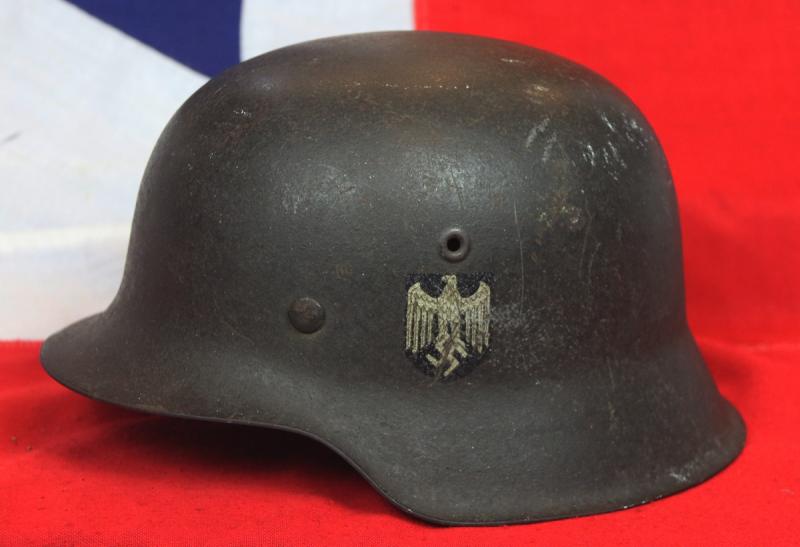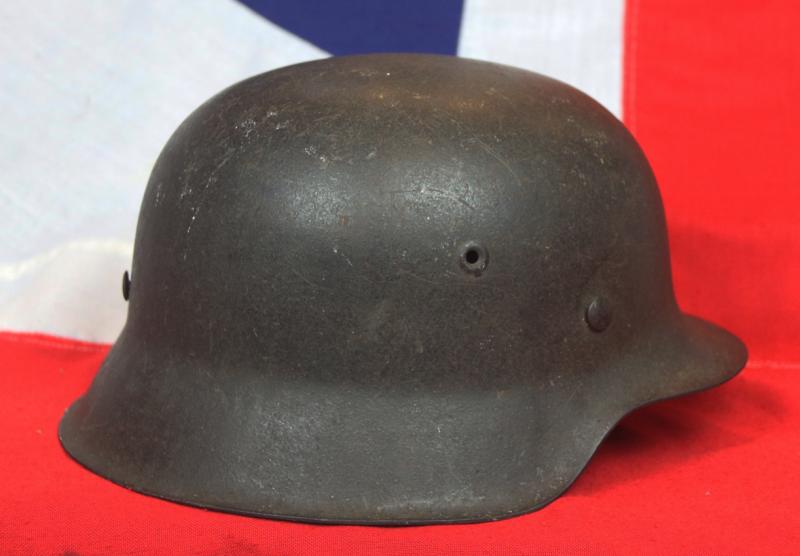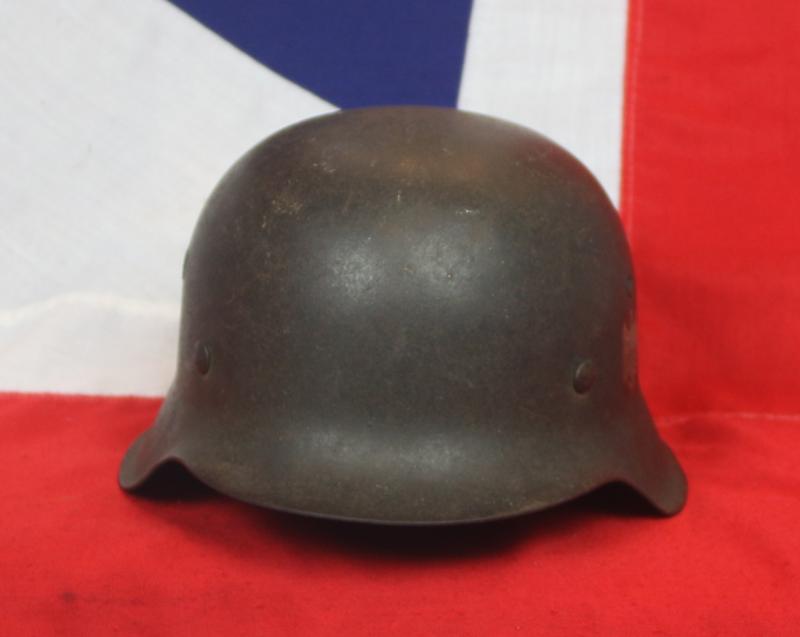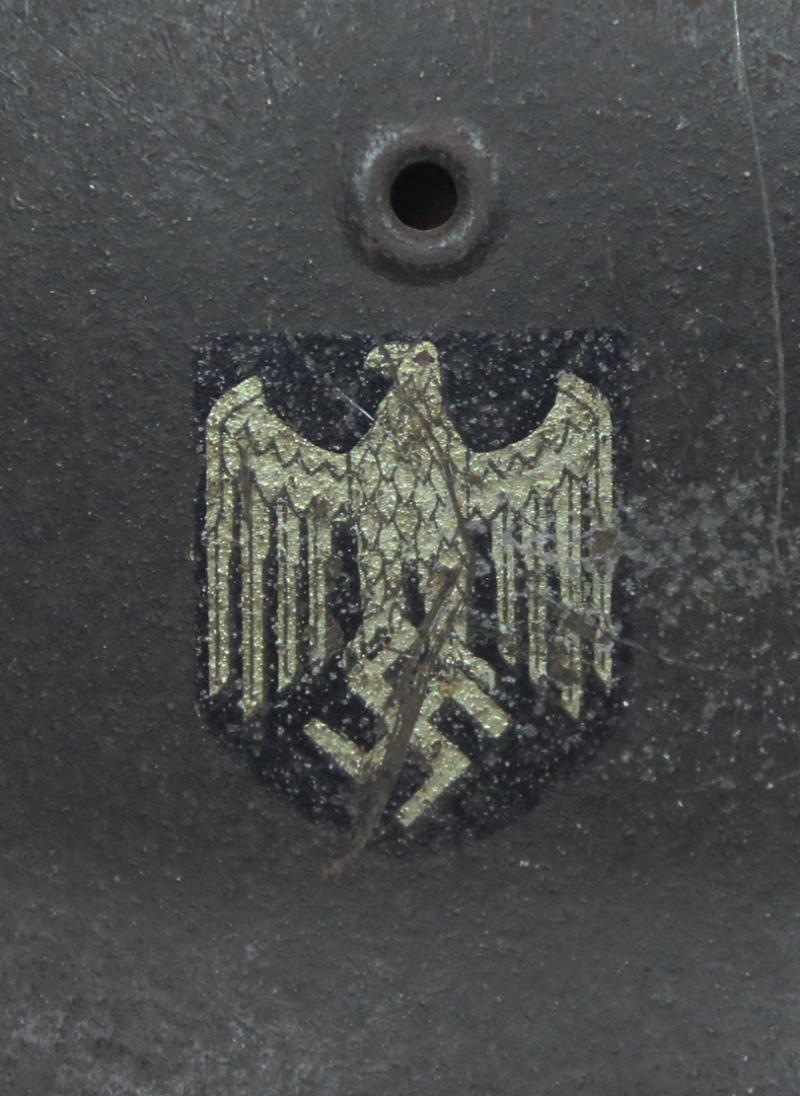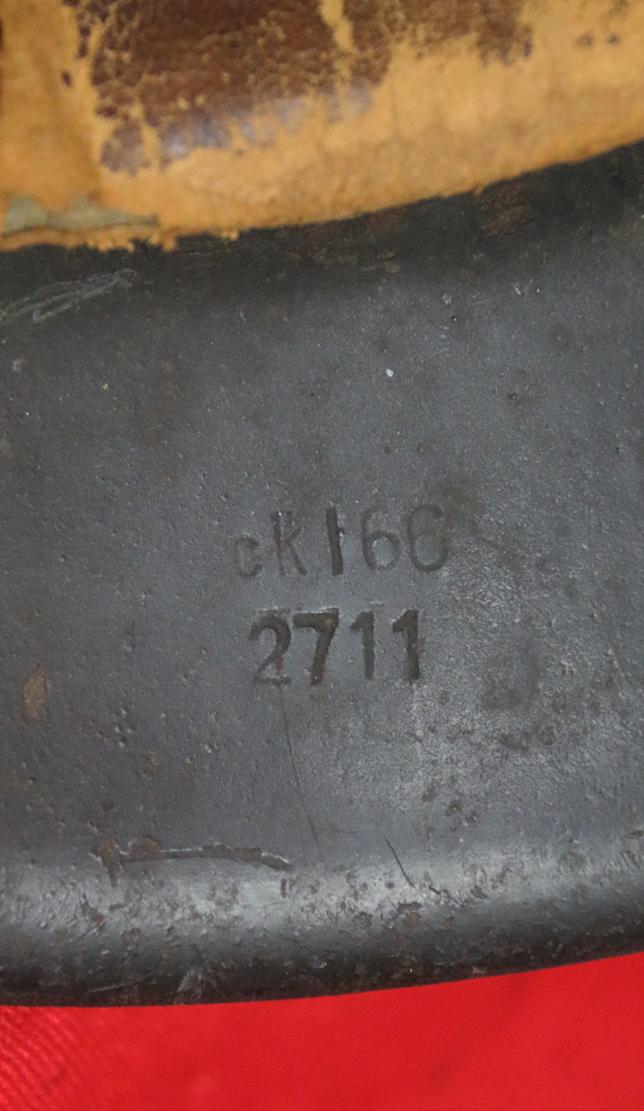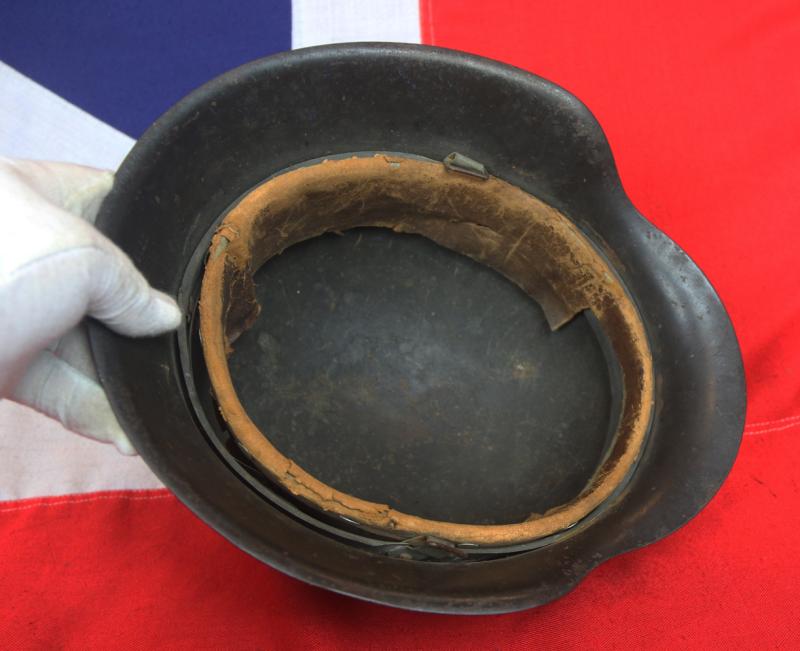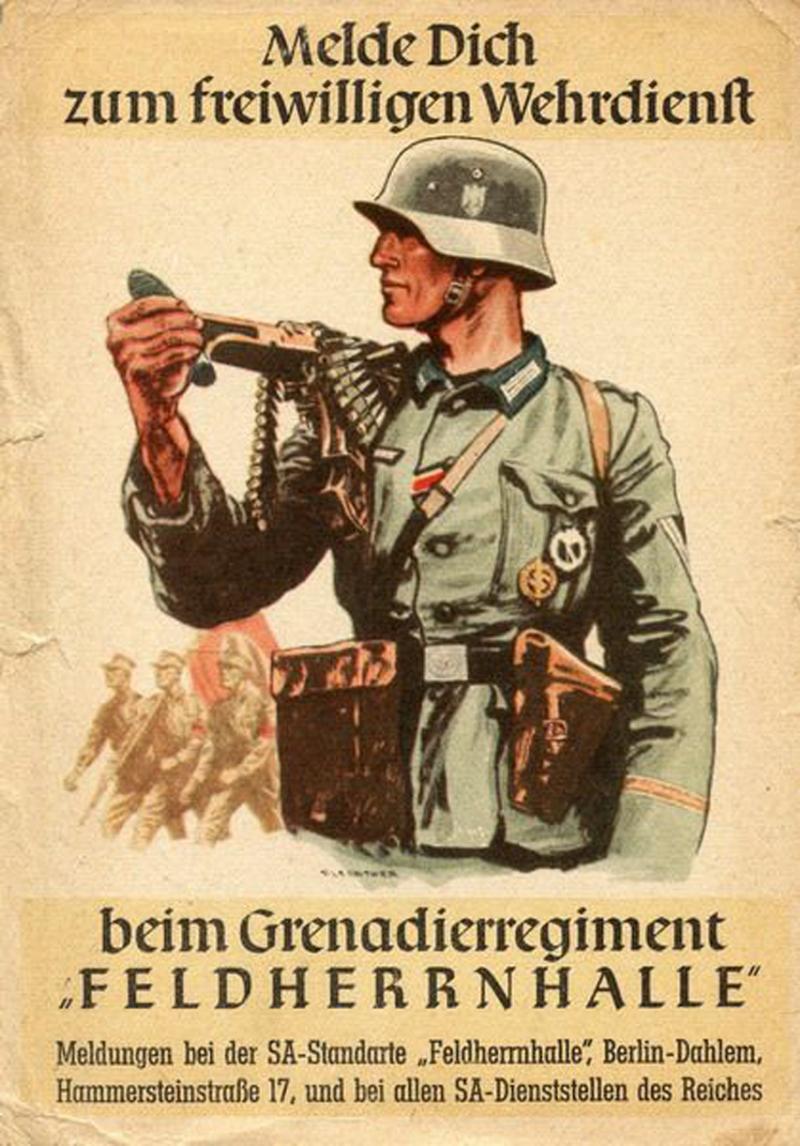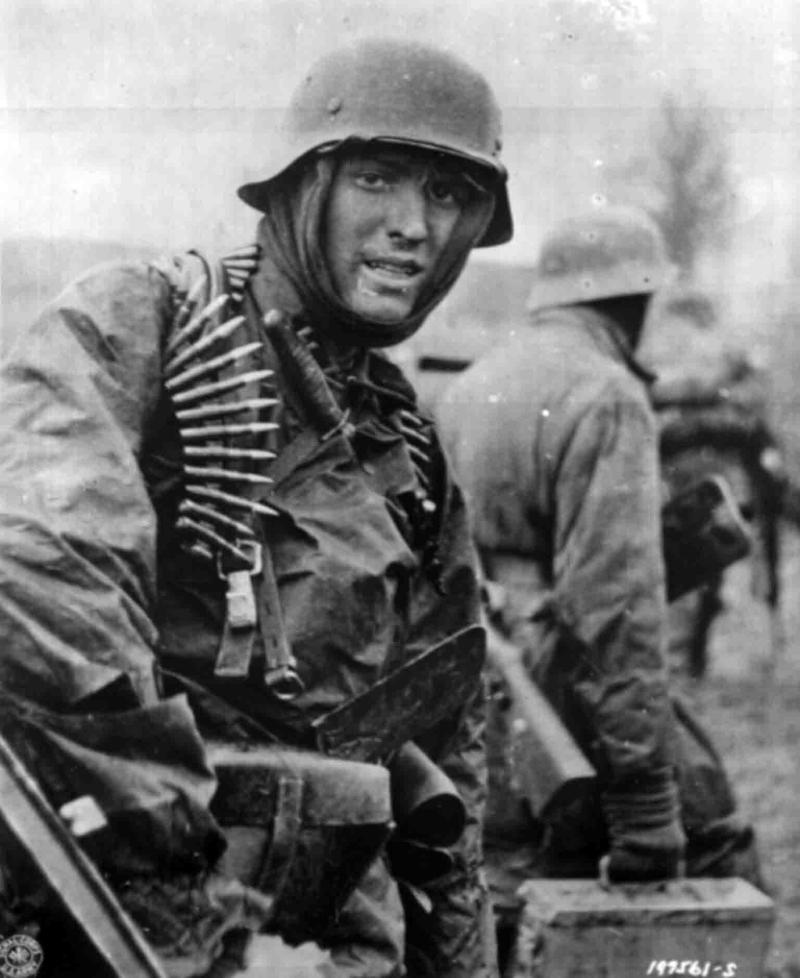A German WW2 M42 Combat Helmet & Excellent Single Army Eagle Decal. Untouched Paint & Decal, Part Liner
Good old original rough texture paint in Heer green, part liner with rubbed edge wear and stamped size 66. Maker stamped CKL. The makers mark CKL, was used in 1943 by Eisenhüttenwerk AG, of Thale Hartzuttenwerk. The company formerly used the code maker mark ET.
Overall in superb untouched condition, just as it returned in 1945, just the liner tongues lacking.
The M1942 design was a result of wartime demands. The rolled edge on the shell was eliminated, creating an unfinished edge along the rim. This edge slightly flared out, along the base of the skirt. The elimination of the rolled edge expedited the manufacturing process and reduced the amount of metal used in each helmet. Shell paint colours were typically matte gray-green (army) or gray-blue (Luftwaffe), and the decals were eliminated in 1943 to speed up production and reduce the helmet's combat visibility. Greater manufacturing flaws were also observed in M1942 helmets made late in the war. Until the winter of 1942-1943, the German army was victorious in an almost unbroken chain of battlefield successes. Europe lay under German domination. After a successful German advance in summer 1942, the battle for the city of Stalingrad in late 1942 proved a turning point. Soviet forces halted the German advance at Stalingrad on the Volga River and in the Caucasus. After this defeat, German troops were forced on the defensive, beginning the long retreat westward that was to end with Nazi Germany's surrender in May 1945, some three years later.
Soviet forces launched a counteroffensive against the Germans arrayed at Stalingrad in mid-November 1942. They quickly encircled an entire German army, more than 220,000 soldiers. In February 1943, after months of fierce fighting and heavy casualties, the surviving German forces—only about 91,000 soldiers—surrendered. After Stalingrad, Soviet forces remained on the offensive for the remainder of the war, despite some temporary setbacks. A last German offensive of around 750,000 combatants at Kursk failed in the summer of 1943 against the vastly superior armed 2,000,000. Russians. The Soviets pushed the Germans back to the banks of the Dnieper River in 1943 and then, by the summer of 1944, to the borders of East Prussia. In January 1945, a new offensive brought Soviet forces to the banks of the Oder, in eastern Germany.
Every single item from The Lanes Armoury is accompanied by our unique Certificate of Authenticity. Part of our continued dedication to maintain the standards forged by us over the past 100 years of our family’s trading, as Britain’s oldest established, and favourite, armoury and gallery
Code: 24956

